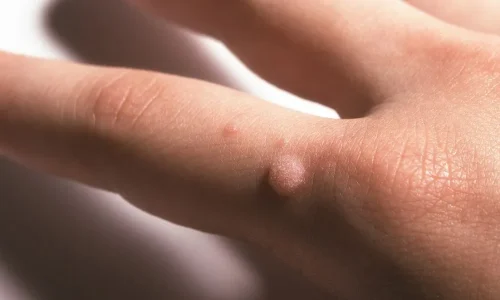What causes viral warts?
Viral warts are skin growths caused by the human papillomavirus. Warts can grow on any part of the body including the face, fingers and feet. Warts have a rough surface on which tiny, dark dots can often be seen. On pressure areas like the palms or the soles, they appear flat. Warts on the sole (called plantar warts) grow inward from the pressure of standing and walking and are often painful.
Warts are common and can be a nuisance. Warts on the soles can be painful when pressure is applied to them. Common warts are not known to turn cancerous. Warts are contagious and may spread from one part of the body to another or to other people. Warts on the genital skin are usually sexually transmitted.
What are the types of viral warts?
Viral warts can be divided according to their appearance or location of warts. For example, the common wart (verruca Vulgaris) appears as a hard, skin-coloured growth with a rough surface. Plane warts appear flat-topped and are more common on the face and limbs. Warts on the genital skin, known as genital warts, are usually sexually transmitted.
What are the treatments for viral warts?
- The treatment for warts can be divided into destructive methods or immunotherapy. Some ways of destroying warts include carbon dioxide laser ablation, cryotherapy (freezing with liquid
- nitrogen) or with topical applications like salicylic acid.
- In people with multiple warts, persistent warts or warts that recur after treatment, immunotherapy can be considered as a useful treatment alternative. Immunotherapy stimulates the body’s immune system to clear the wart/s.
Liquid nitrogen is the most common treatment method used for warts at this centre. Liquid nitrogen is sprayed in short bursts onto the wart. The skin in this area becomes extremely cold when the liquid nitrogen is applied. Occasionally this may result in the formation of a blister, which is normal. There may be temporary pain which can be eased with painkillers, if necessary.
There is no need to cover the treated areas if the blisters are intact. Should there be a painful blister, you may prick it with a sterile needle. A simple dressing may be necessary if the skin is broken.
There is no need to apply any medications other than those prescribed.





